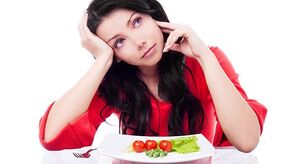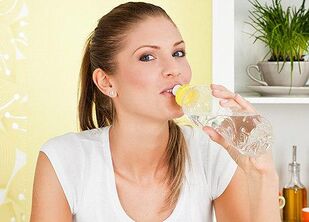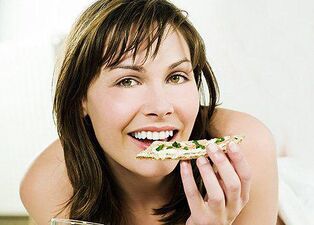Pancreatitis is one of the most serious diseases of the digestive system. Distinguish between acute and chronic pancreatitis, each of these types has its own characteristics and methods of treatment.

Pancreatitis is one of the most serious diseases of the digestive system. Distinguish between acute and chronic pancreatitis, each of these types has its own characteristics and methods of treatment.
But one thing is unchanged in pancreatitis: the old way of life and nutrition will remain in the past, because the basis of pancreatitis treatment is an almost lifelong diet. The pancreas does not forgive mistakes in nutrition, immediately responding with pain and indigestion.
Pancreatitis Basics
Pancreatitis is an acquired disease, it develops as a result of abdominal trauma, viral damage to the pancreas, due to disruption of the liver and gallbladder, after alcohol and other toxic substances poisoning, with frequent and severe nutritional disorders - prolonged fasting, sittingon diets for weight loss.
The main signs of pancreatitis are:
- abdominal pain - sharp, dagger, almost to the point of loss of consciousness in acute pancreatitis, or dull or aching in the chronic version;
- nausea and vomiting;
- stool disorders, more often severe diarrhea, fever;
- drastic weight loss.
Acute pancreatitis is usually admitted to the hospital. Exacerbations of chronic can be treated at home, but only under the supervision of a doctor. Self-medication in the case of pancreatitis is dangerous by the development of complications up to pancreatic necrosis (enzymatic melting of the gland tissue, self-digestion of the gland) and the development of peritonitis, which is deadly.
Nutritional therapy for pancreatitis
Medicinal, enzyme and dietary therapy for pancreatitis is selected by the doctor, based on the patient's condition and test data. However, the general principles of dietary correction always remain approximately the same. They give rest to the digestion and the pancreas, which means they reduce pain and normalize well-being.
Nutrition in pancreatitis is severely limited - most of the usual products will have to be forgotten.It is necessary to eat often, about 5-6 times a day - every 2. 5-3 hours, with a break for 8 hours of sleep. But the portions by volume should be small - about 200-250 g, especially in the first time after an exacerbation of the disease.
All dishes are mechanically processed - they are almost all used in pureed form. Then, as the inflammation subsides, larger particles appear in the food, but you need to chew the food thoroughly.
Since the entire body suffers from insufficient nutrient supply in pancreatitis,needs to increase the protein component of the diet (meat, fish, dairy products) - on average, up to 140-150 g of protein per day.
But fats and carbohydrates, which strongly strain the pancreas, are limited to the minimum possible. About 300 g of carbohydrates per day are given, fat - no more than 70-80 g.
Products that have a sokogonny effect - meat and fish broths, cabbage juice and broth - are removed from the diet; for the duration of a severe pain attack, therapeutic fasting is recommended for a period of 1-2 days under the supervision of a doctor.
In case of pancreatitis, it is necessary to drink more fluids -it is recommended to drink up to 2 liters of pure water per day, approximately every half hour to take 2-3 sips of water throughout the day.

Naturally, with pancreatitis, you must completely stop smoking and alcohol consumption. They are the most powerful seizure provocateurs.
What to exclude?
The list of prohibited foods will become quite impressive and can be disheartening at first. However, without adhering to these restrictions, relief can be expected for a very long time. Gradually, you can carefully expand your diet, adhering to the general principles of good nutrition.
So, for the entire acute period or the moment of exacerbation of the chronic process, it is necessary to exclude:
- beetroot soup, cabbage soup and borscht, okroshka, soups on meat, mushroom and fish broths, broths themselves;
- fatty meat - pork, lamb, goose and duck;
- offal - kidneys, heart, brains, liver;
- fried, smoked, salty and spicy dishes;
- canned foods;
- sausages;
- fatty fish (catfish, stellate sturgeon, carp); caviar;
- lard, margarine, mayonnaise;
- fatty dairy dishes - cream, sour cream, koumiss;
- yolks, boiled eggs;
- millet, corn, barley, legumes side dishes;
- cabbage, turnips, radishes, radishes, rutabagas, eggplants, onions and garlic, sorrel, cucumbers, tomatoes and bell peppers;
- citruses, apples (sour varieties), grapes, pomegranates, cranberries;
- chocolate, preserves;
- spicy fries, sauces, marinades, vinegar, ketchup;
- all carbonated drinks, even mineral water (you can only without gas);
- strong tea and coffee, juices, cocoa;
- all fresh baked goods and pastries, pancakes, pies, shortbread cookies.
As you can see, the list of restrictions is quite large, but this is only for the duration of the acute process. Then gradually you can gradually expand the diet, but annoying and "heavy" dishes will have to be forgotten almost forever.
What can you eat?
This is the first question that comes up after reading the ban list. Of course, the diet is not very diverse, but it is aimed at keeping the pancreas calm and relieving inflammation.

Allowed:
- yesterday's dried bread, croutons;
- vegetable, noodle soups;
- steamed meat dishes and poultry - cutlets, meatballs, rolls, pates, meat puree;
- boiled fish fillet (lean), baked fish, omelets;
- milk, cottage cheese, low-fat and mild cheese, kefir;
- vegetable and butter (in porridge) oils;
- vegetable purees and stews, boiled vegetables;
- pasta, noodles, from cereals - oatmeal, semolina, buckwheat, rice;
- unsweetened baked fruits (pears, apples, peaches, plums);
- compote, jelly, jelly;
- rosehip decoctions, herbal teas, bran drink.
Of course, the diet is limited, but in consultation with your doctor, you will gradually expand your menu.
Sample Menu
It is worth remembering that this menu can be used at home, when the exacerbation subsides, at the acute stage of pancreatitis, fasting and the gradual introduction of food are prescribed. When drawing up a diet, remember: there should be at least five meals, which are approximately equal in calorie content and the load on digestion.
Menu for pancreatitis for 5 days
Day One
- Breakfast: mashed potatoes - 100-150 g, 2 croutons of white bread, 200 ml of mineral water (no gas! ).
- Second breakfast: steamed chicken cutlet - 100 g, omelette - 100 g, white dried bread - 1 slice, 200 ml of milk (kefir).
- Lunch: vegetable soup - 200 ml, boiled fish - 100 g, zucchini puree - 100 g, white bread - 1 slice, rosehip broth - 200 ml, a third of a banana.
- Afternoon snack: fruit jelly - 100 g, fat-free cottage cheese -100 g, still mineral water - 200 ml.
- Dinner: oatmeal -200 g, pumpkin puree - 100 g, steam meatball - 2 pcs. , weak tea with milk, a slice of dark bread.
Day Two
- Breakfast: buckwheat porridge -200 g, 2 croutons of white bread, 200 ml of tea with milk.
- Second breakfast: steamed beef cutlet - 100 g, carrot soufflé - 200 g, dried white bread - 1 piece, 200 ml of dried fruit compote.
- Lunch: noodle soup - 200 ml, boiled chicken - 100 g, vegetable puree - 100 g, white bread - 1 slice, mineral water - 200 ml, half a baked pear.
- Afternoon snack: applesauce - 200 g, still mineral water - 200 ml, biscuits Maria - 100 g.
- Dinner: mashed potatoes -200 g, low-fat cottage cheese - 100 g, a sandwich with cheese (30 g of cheese, a piece of toasted bread), weak tea with milk, a slice of dark bread.
Day Three
- Breakfast: squash and pumpkin puree - 100-150 g, 2 croutons of white bread, 200 ml of mineral water (no gas! ).
- Second breakfast: low-fat cottage cheese - 100 g, half a baked pear, white dried bread - 1 slice, 200 ml of compote.
- Lunch: broccoli soup - 200 ml, boiled meat, ground in mashed potatoes - 100 g, mashed potatoes - 100 g, white bread - 1 slice, chamomile tea - 200 ml.
- Afternoon snack: vegetable stew - 200 g, cheese - 50 g, still mineral water - 200 ml.
- Dinner: buckwheat porridge -200 g, kefir - 200 g, half a banana, a slice of white bread.
Day Four
- Breakfast: mashed potatoes - 100-150 g, 2 croutons of white bread, 200 ml of mineral water (no gas! ).
- Second breakfast: rice porridge - 200 g, white toasted bread - 1 slice, 200 ml of milk (kefir).
- Lunch: vegetable soup - 200 ml, boiled fish - 100 g, carrot puree - 100 g, white bread - 1 slice, rosehip broth - 200 ml, a third of a banana.
- Afternoon snack: omelet - 100 g, baked sweet apple, still mineral water - 200 ml.
- Dinner: oatmeal -200 g, pumpkin puree - 100 g, steam meatball - 2 pcs. , weak tea with milk, a slice of dark bread.
Day Five
- Breakfast: oatmeal -200 g, pumpkin puree - 100 g, steam meatball - 2 pcs. , weak tea with milk, a slice of dark bread.
- Second breakfast: steamed chicken cutlet - 100 g, omelette - 100 g, white dried bread - 1 slice, 200 ml of milk (kefir).
- Lunch: pasta soup - 200 ml, steamed fish cutlet - 100 g, pumpkin puree with carrots - 100 g, white bread - 1 piece, rosehip broth - 200 ml, Maria cookies - 2 pcs.
- Afternoon snack: baked fruit - 100 g, fat-free cottage cheese -100 g, still mineral water - 200 ml.
- Dinner: mashed potatoes - 100-150 g, 2 crackers of white bread, 200 ml of mineral water (still! ).
With adherence to your doctor's advice, strict adherence to your diet and adherence to all prescriptions, relief can be achieved quickly. But a fairly strict diet with restriction of "heavy" food will last from 3 to 6 months. And then you will constantly need to limit fatty, fried, spices and canned food.































